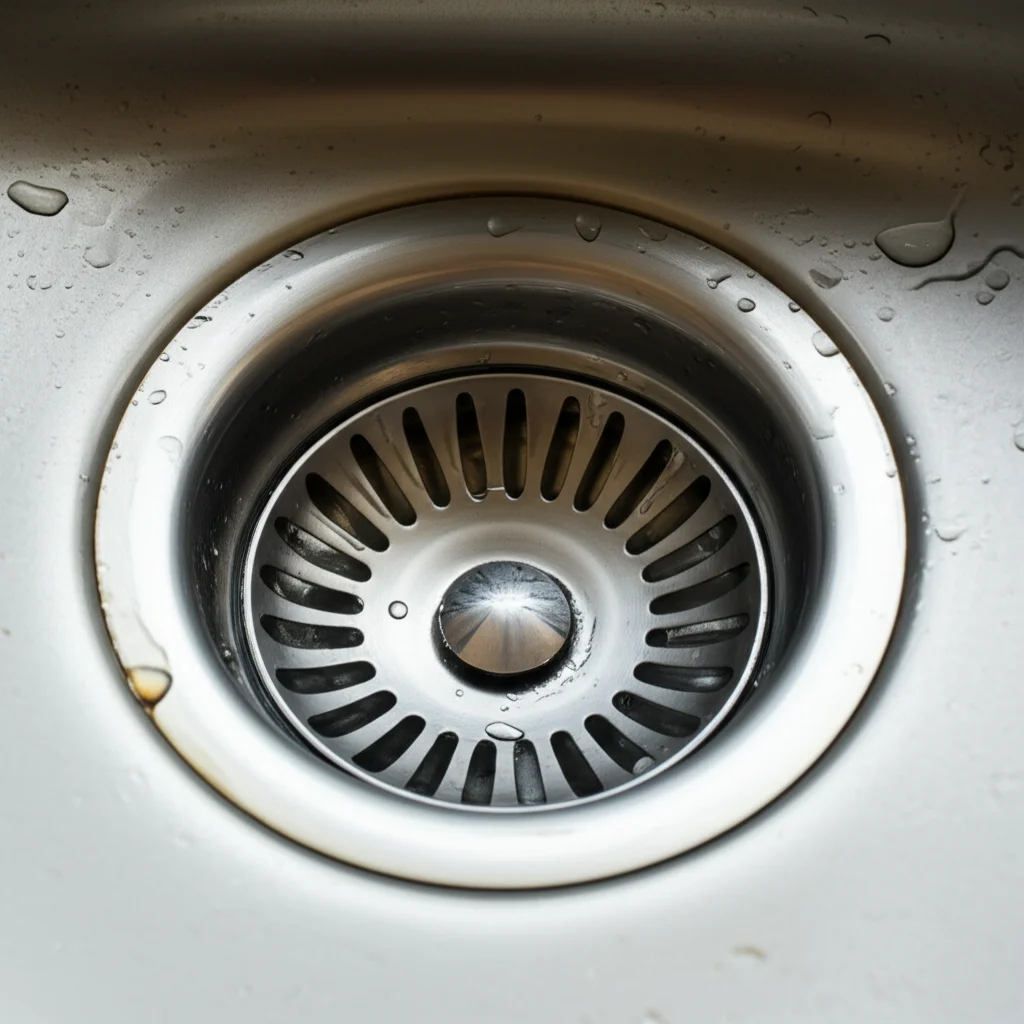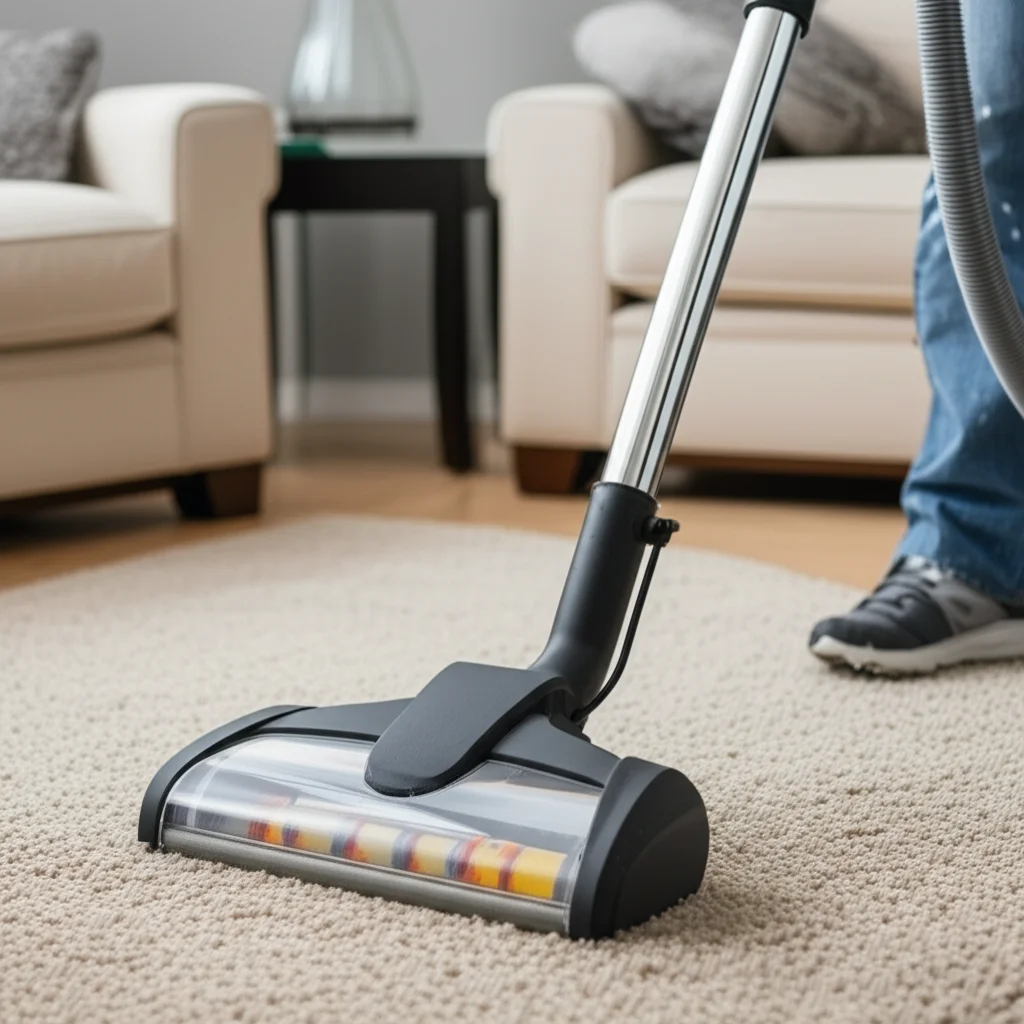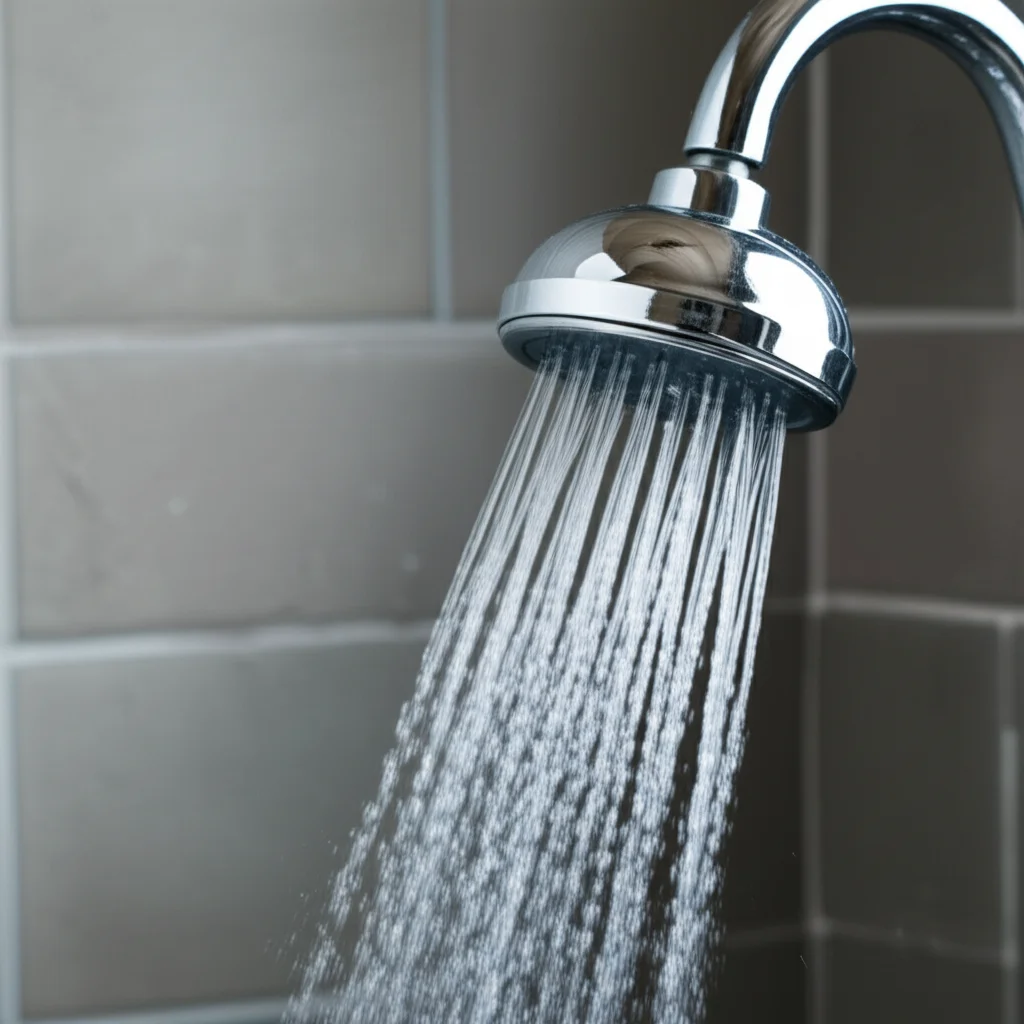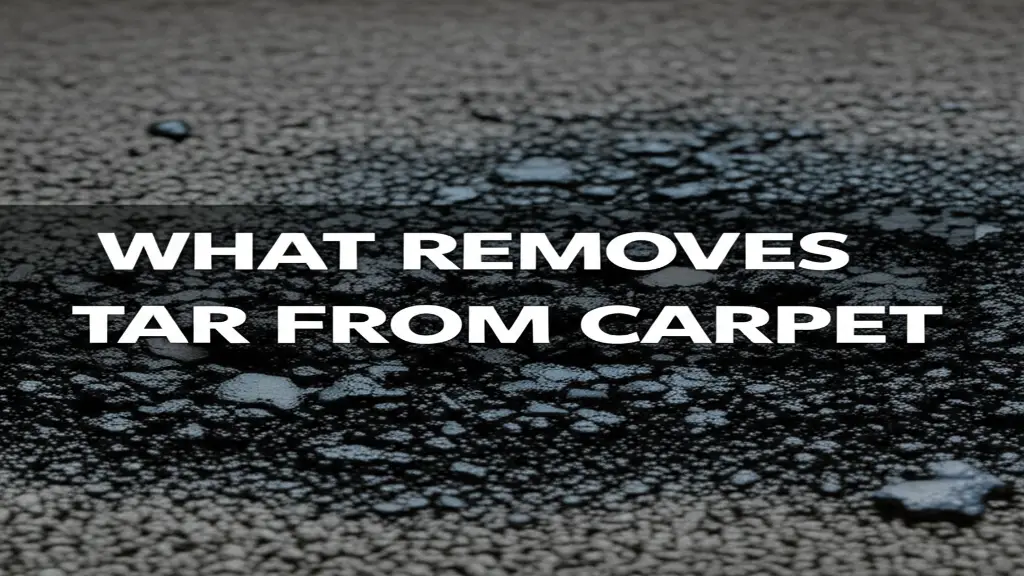· Todd Martin · Home Cleaning & Maintenance · 19 min read
How To Clean Sink Overflow

How To Clean Your Sink Overflow Effectively
Have you ever noticed unpleasant odors or dark grime lurking in your sink’s overflow drain? You are not alone. This often-overlooked part of your sink plays a crucial role in preventing floods, but it also collects soap scum, hair, and other debris. Learning how to clean sink overflow properly makes a big difference. It helps your sink stay hygienic and fresh.
This guide provides clear steps to deep clean your sink overflow. We will cover common tools, natural cleaning solutions, and methods for stubborn blockages. You will also learn practical tips to keep your overflow clean long-term. Let us get your sink looking and smelling fresh.
Takeaway
- Gather simple tools like a small brush, old toothbrush, and cleaning solution.
- Flush the overflow with hot water to loosen debris.
- Use a pipe cleaner or bottle brush to scrub the inside of the overflow channel.
- Apply a mixture of baking soda and vinegar for deep cleaning and deodorizing.
- Rinse thoroughly with hot water after cleaning.
- Perform regular maintenance to prevent future buildup and odors.
To clean your sink overflow effectively, combine physical scrubbing with chemical action. First, flush with hot water. Next, use a small brush to dislodge visible grime. Then, pour a mixture of baking soda and vinegar into the opening. Allow it to fizz, and follow with a hot water rinse. This removes gunk and bad smells.
Understanding Your Sink Overflow System
Your sink has an overflow opening. This small hole sits near the top of the sink basin. It acts as a safety feature. If you leave the faucet running, water flows into this opening before it spills onto the floor. The overflow channel connects directly to your main sink drainpipe. This design prevents accidental flooding in your bathroom or kitchen.
While useful, this channel is also a hidden space. Water, soap, toothpaste, hair, and other debris go into it. This debris builds up over time. It forms a slimy layer. This layer can grow mold or mildew. It can also produce bad smells. Regular cleaning prevents these problems. It keeps your sink hygienic.
Cleaning the overflow is part of good home care. Many people clean the sink basin but forget this part. A dirty overflow drain impacts air quality. It harbors bacteria. It can also slow down your sink’s overall drainage. Knowing how to clean this specific part improves your home hygiene. It protects your plumbing system too.
Think of it as a small, separate drain. It needs the same attention as your main drain. Neglecting it can lead to bigger issues. These issues include stubborn odors and blockages. We want to avoid these problems. Proper cleaning ensures your sink system works well. It keeps your home smelling fresh.
Essential Tools and Supplies for Overflow Cleaning
You need specific items to clean your sink overflow well. These tools are often found around the house. They help you reach inside the narrow channel. Having the right supplies makes the job easier. It also ensures thorough cleaning.
Here is a list of what you will need:
- Small brush or pipe cleaner: A flexible bottle brush or a pipe cleaner works best. An old toothbrush can also help. These tools fit into the overflow hole. They let you scrub the inner surfaces.
- Hot water: Boiling water helps loosen grease and grime. Use it carefully.
- White vinegar: This is a natural cleaner and deodorizer. It breaks down mineral deposits and soap scum.
- Baking soda: Baking soda is an abrasive cleaner. It absorbs odors.
- Small bucket or basin: Use this to catch any water or debris. Place it under the sink if you can access the overflow tube directly.
- Rubber gloves: Protect your hands from grime and cleaning solutions.
- Microfiber cloth or old towel: Use these for wiping surfaces clean.
- Flashlight: This helps you see inside the overflow channel.
Some people prefer stronger solutions. You might use a mild dish soap solution. Or, a specific enzyme-based drain cleaner. Choose products safe for your sink material. For instance, some cleaners harm certain finishes. Always read labels before you start. Gather everything before you begin the cleaning process. This saves time and effort. Having everything ready makes the cleaning job efficient.
You can also use a small vacuum cleaner with a narrow attachment. This helps remove loose debris before wet cleaning. A handheld showerhead can also provide a strong water jet for flushing. Remember, safety comes first. Always use good ventilation, especially with stronger cleaning agents.
Step-by-Step General Cleaning Process
Cleaning your sink overflow is a straightforward task. Following these steps helps you do a thorough job. This method works for routine cleaning. It keeps light buildup from becoming a problem. I find it very effective for maintaining hygiene.
Here is how you clean it:
- Prepare the area: First, clear any items from around your sink. Put on your rubber gloves. You might want to place a small bucket under the sink. This catches anything that comes out.
- Initial Flush with Hot Water: Boil some water. Carefully pour about a cup of very hot water into the overflow opening. Do this slowly. The hot water helps soften and loosen accumulated grime and soap scum. It also helps to clean gunk out of bathroom sink drain. Let it sit for a few minutes.
- Physical Scrubbing: Take your small brush, pipe cleaner, or old toothbrush. Insert it into the overflow hole. Move the brush around inside the channel. Scrub the walls of the overflow opening. You will likely see dark gunk come out. Keep scrubbing until the brush comes out cleaner. For a deeper clean in other sink areas, you might also consider how to clean your sink faucet.
- Baking Soda and Vinegar Treatment: Pour about half a cup of baking soda directly into the overflow hole. Follow it with half a cup of white vinegar. The mixture will fizz and bubble. This reaction helps break down organic matter. It also neutralizes odors. Let it sit for 15-30 minutes. This allows the cleaning agents to work. This method is similar to how to clean a sink drain with vinegar.
- Final Flush: After the sitting time, pour another cup of hot water into the overflow. This flushes away the baking soda, vinegar, and any remaining debris. Repeat the hot water flush a couple of times. You want to ensure no residue remains.
- Wipe the Exterior: Use your microfiber cloth to wipe the outside of the overflow opening. Make it shine.
This process should leave your sink overflow clean and fresh. If you still notice odors or blockages, more intense methods are needed. We will cover those next.
Tackling Stubborn Buildup and Mold
Sometimes, regular cleaning is not enough. Your sink overflow might have stubborn black gunk or mold growth. This happens if the area stays damp. It also occurs if cleaning is neglected. Addressing these issues requires a more focused approach. These methods are stronger than general cleaning.
Here is how to deal with tough buildup:
- Extended Baking Soda and Vinegar Soak: For persistent grime, increase the soak time. After pouring the baking soda and vinegar, let it sit for several hours. You can even leave it overnight. This gives the mixture more time to break down hardened deposits. Follow with a thorough hot water flush.
- Using a Flexible Drain Snake: If you suspect a partial blockage deep inside, a small, flexible drain snake can help. Insert the snake into the overflow hole. Push it gently. Rotate it to dislodge debris. Pull it out slowly. Be prepared for a lot of gunk to come out. Clean the snake after each use. You can get more specific tips on handling clogs with a snake by learning how to clean a clogged kitchen sink.
- Hydrogen Peroxide: Hydrogen peroxide is an effective mold killer. Pour half a cup of 3% hydrogen peroxide into the overflow opening. Let it sit for 30 minutes. It will bubble as it works on the mold. Follow with a hot water rinse. Use caution and ensure good ventilation. This is a powerful agent. It helps clean stubborn black stuff too, similar to how to clean black stuff in sink drain.
- Bleach Solution (Use with Extreme Caution): Bleach kills mold and sanitizes surfaces. Mix one part bleach with ten parts water. Pour a small amount into the overflow. Let it sit for 15-20 minutes. Never mix bleach with vinegar or any other cleaners, especially ammonia-based ones. This creates toxic fumes. After use, flush with plenty of cold water. Only use bleach if other methods fail. Ensure excellent ventilation. Bleach can damage some finishes, test a hidden spot first.
- Enzyme Cleaners: These cleaners use natural enzymes to break down organic matter. They are safer for pipes and septic systems. Pour according to product directions. They work slowly but are effective for organic buildup.
Always test any strong cleaner in a hidden spot first. This checks for discoloration or damage. Ensure good airflow in the room when using strong chemicals. Dealing with mold and gunk prevents bad odors. It also makes your sink look much better.
Natural Cleaning Solutions for Your Overflow
Natural cleaning solutions are a great choice. They are safe for your family and pets. They are also gentle on your plumbing. You can achieve excellent cleaning results without harsh chemicals. These methods are also environmentally friendly.
Here are some effective natural options:
- Baking Soda and Vinegar Power Duo: This is a classic for a reason. Baking soda acts as a mild abrasive and deodorizer. Vinegar cuts through grease and mineral deposits. Pour half a cup of baking soda into the overflow. Follow with half a cup of white vinegar. The fizzing action helps loosen grime. Let it sit for at least 30 minutes. Then, flush with hot water. This method effectively cleans and deodorizes the overflow channel. It is a fundamental method used for many areas, like how to clean mold with vinegar.
- Lemon Juice and Salt Scrub: For light stains or odors, mix lemon juice with salt to form a paste. Apply this paste around the visible part of the overflow opening. Use a small brush to scrub gently. The acidity of lemon juice tackles stains. Salt acts as a mild abrasive. Rinse with warm water after scrubbing. Lemon also leaves a fresh scent.
- Boiling Water Flush: Sometimes, simplicity is best. Regularly pouring boiling water down the overflow helps prevent buildup. It melts grease and flushes away loose debris. Do this once a week as a preventative measure. Be careful with boiling water. Pour it slowly and directly into the hole.
- Borax Solution: Borax is a natural mineral. It is known for its cleaning and deodorizing properties. Mix two tablespoons of borax with a cup of hot water. Stir until dissolved. Pour the solution into the overflow opening. Let it sit for about an hour. Flush with hot water. Borax helps to clean and sanitize.
These natural methods are excellent for routine cleaning. They also work for moderate buildup. They avoid strong fumes and chemical residues. Using them keeps your sink overflow clean naturally. It promotes a healthier home environment. Remember to keep a regular cleaning schedule. This prevents major issues.
When Your Sink Overflow is Clogged
A clogged sink overflow can be frustrating. It means water cannot escape properly if the main drain backs up. This blockage often comes from a long period of neglect. Hair, soap scum, and other debris can form a solid plug. When this happens, simple flushing or brushing may not work. You need more aggressive methods.
Here are steps to take when your overflow is truly clogged:
- Confirm the Clog: First, check if the main sink drain is also slow. If water stands in the sink and does not go down the overflow, it is likely clogged.
- Use a Plunger (Carefully): You can try plunging. Cover the main sink drain with a wet cloth or stopper. This creates a seal. Place the plunger over the overflow hole. Plunge vigorously. The suction and pressure can dislodge the clog. Be gentle, as too much force can damage the overflow pipe.
- Flexible Small Drain Snake or Zip-It Tool: These tools are designed for narrow drains. Carefully insert the snake or Zip-It tool into the overflow hole. Push it until you feel resistance. Rotate and pull it back out. It will likely pull out hair and gunk. Repeat this several times. Clean the tool after each pull. This method is similar to cleaning a regular drain. For specific help with the main drain, you can learn how to clean slow draining sink. You can also find guidance on how to clean hair out of bathroom sink drain.
- Enzyme Drain Cleaner: For organic clogs, an enzyme drain cleaner can be effective. These cleaners contain bacteria that digest organic matter. They are generally safer for plumbing than chemical drain openers. Pour the recommended amount into the overflow. Let it sit overnight. Flush with hot water in the morning.
- Disassemble the Overflow (Advanced): This is a more involved step. Some sink overflows connect to the P-trap with a removable tube. You might be able to detach this tube. This allows for direct cleaning. You need tools like a wrench. Place a bucket underneath to catch water. This should only be attempted if you are comfortable with plumbing.
- Professional Help: If all else fails, call a plumber. They have specialized tools. They can clear stubborn clogs without damaging your sink or pipes. A professional ensures the job gets done right.
Dealing with a clog takes patience. Avoid harsh chemical drain cleaners if possible. They can damage pipes and are harmful. Always try mechanical methods first. Keeping your overflow clear prevents bigger plumbing problems.
Prevention and Regular Maintenance
Cleaning your sink overflow is important. But preventing buildup is even better. Regular maintenance stops grime and odors from forming. It keeps your sink hygienic. It also extends the life of your plumbing system. I find that a little effort often saves a lot of trouble later.
Here are practical tips for prevention and regular upkeep:
- Weekly Hot Water Flush: Make it a habit to pour a kettle of hot water down the overflow once a week. This simple action helps flush out loose debris and dissolve minor grease buildup before it hardens. It is a quick and easy way to maintain cleanliness.
- Monthly Baking Soda and Vinegar Treatment: Once a month, perform the baking soda and vinegar cleaning. Pour half a cup of baking soda into the overflow, followed by half a cup of white vinegar. Let it sit for 15-30 minutes, then flush with hot water. This proactive step prevents significant accumulation. This helps with overall bathroom cleaning, similar to how one might go about how to clean bathroom with vinegar.
- Mindful Sink Use: Be aware of what goes down your sink. Avoid pouring large amounts of hair, soap residue, or food particles into the basin. Especially try to limit things that can easily get stuck. These items often find their way into the overflow.
- Regular Sink Cleaning: When you clean your main sink basin, also give a quick wipe to the visible part of the overflow hole. Use a general bathroom cleaner and a cloth. This removes surface grime and keeps the area looking neat. For general upkeep, knowing how to clean stainless steel sink or other sink types is helpful.
- Use a Drain Strainer: Place a mesh drain strainer in your sink. This catches hair and food particles before they enter the drain system. While it directly protects the main drain, it reduces the amount of debris that could potentially enter the overflow during high water levels.
- Address Slow Drains Promptly: If your main sink drain starts to run slowly, address it quickly. A slow main drain puts more pressure on the overflow. It makes the overflow work harder. This increases the chance of a clog there too. A prompt response to a slow draining sink is vital.
- Consider an Enzyme Drain Maintainer: For an extra layer of protection, use an enzyme drain maintainer once a month. These products contain beneficial bacteria that consume organic waste. They help keep both your main drain and overflow clear.
By integrating these easy habits into your routine, you can largely avoid major overflow cleaning tasks. Prevention is always simpler than cure. Your sink will stay cleaner and fresher for longer.
Advanced Techniques for Deep Cleaning
Sometimes, standard methods might not fully clean a very dirty sink overflow. If odors persist or visible grime remains, you may need more advanced techniques. These methods require more effort. They offer a deeper clean.
Here are advanced strategies for a spotless overflow:
- Using a Steamer: A handheld steam cleaner can be very effective. Direct the steam nozzle into the overflow hole. The high temperature and pressure of the steam break down tough grime and kill bacteria and mold. Be careful not to burn yourself. Steam helps to loosen stubborn deposits that brushes cannot reach. This method is also great for sanitizing.
- Pressure Washer with Specific Nozzle (Exterior Only): If the overflow opening is especially dirty on the exterior, a low-pressure setting on a small pressure washer might work. Use only if the sink material can handle it. Direct the narrow stream into the visible hole. This helps blast away caked-on grime. Do not use high pressure. It can damage the sink. Ensure the water goes into the drain.
- Disassembling the Overflow Tube (Professional or DIY with Caution): For the most thorough cleaning, you might need to remove the overflow tube itself. This is typically located behind the sink, connected to the P-trap.
- Steps for Disassembly:
- Place a bucket under the P-trap to catch water.
- Use a wrench to loosen the nuts connecting the overflow tube to the drain assembly.
- Carefully pull the tube away.
- Once removed, you can thoroughly clean the inside of the tube. Use a long bottle brush and strong cleaning solution. You can also inspect for damage or severe blockages.
- Clean the connection points on the sink and P-trap.
- Reassemble all parts. Ensure a tight seal to prevent leaks. You might need new plumbers’ tape or pipe thread sealant.
- Warning: This method requires some plumbing knowledge. If unsure, call a professional. Improper reassembly can lead to leaks. This is a good time to check for mold under the sink too, as per how to clean mold under sink.
- Steps for Disassembly:
- Use of Commercial Drain Cleaning Brushes: You can buy specialized long, flexible brushes. These are designed for cleaning drain pipes. They have bristles that reach far into the overflow channel. Some come with different sized brush heads. Choose one specifically for sink overflows.
- Professional Plumbing Service: If none of these methods work, or if you are not comfortable with advanced DIY, contact a plumber. They have professional-grade tools. They can use cameras to inspect the pipe. They can clear any blockages effectively and safely.
These advanced techniques tackle the toughest overflow problems. Always prioritize safety. Wear protective gear. Follow product instructions carefully. These methods restore even the most neglected sink overflows.
Understanding Overflow Design and Maintenance Differences
Not all sink overflows are exactly the same. Their design can vary. This affects how you approach cleaning and maintenance. Knowing these differences helps you clean your specific sink effectively. This ensures you do not damage your sink.
Here are common design variations and their impact on cleaning:
- Integrated Overflow: Many modern sinks have overflows built directly into the sink basin. This means the channel is molded into the ceramic or stainless steel. These are usually easier to clean superficially. You can often see into the channel more clearly. The cleaning methods discussed earlier (brushes, baking soda/vinegar) work well for these.
- Separate Overflow Tube: Older sinks, or some pedestal sinks, might have a separate tube. This tube connects the overflow hole to the drainpipe. This tube can be made of plastic or metal. These tubes are sometimes removable for deep cleaning. Removing them allows you to scrub the entire length of the tube outside the sink. However, removal requires plumbing knowledge.
- Slotted vs. Round Overflow: Overflow holes come in different shapes. Some are small round holes. Others are longer, slotted openings. The shape affects the type of brush you can use. A pipe cleaner works well for round holes. A flat brush or cloth on a stick might be better for slotted ones.
- Sink Material: The sink material itself influences cleaning choices.
- Stainless Steel Sinks: These are durable. You can use most cleaning agents. Avoid abrasive scrubbers that scratch the finish. For more details on cleaning this type of sink, refer to how to clean stainless steel sink.
- Porcelain or Ceramic Sinks: These are generally robust. However, harsh chemicals like undiluted bleach can stain or pit the finish over time. Mild cleaners are best. If you have a specific brand, like Kohler porcelain, you can learn how to clean Kohler porcelain sink. For general porcelain care, how to clean stained porcelain sink might be useful.
- Composite or Quartz Sinks: These materials need non-abrasive cleaners. Check the manufacturer’s recommendations. Cleaning a quartz sink or composite sink requires specific care.
- Copper Sinks: Copper requires specialized cleaners to maintain its patina. Avoid harsh acids or abrasives. Learn how to clean copper sink for best results.
- Kitchen vs. Bathroom Overflows: Bathroom sink overflows often collect hair and toothpaste. Kitchen sink overflows might accumulate grease and food particles. The type of debris influences the best cleaning agent. For kitchens, degreasers are more effective. For bathrooms, hair-dissolving agents might be needed.
Always identify your sink’s specific design and material. This helps you choose the correct tools and cleaners. It ensures effective cleaning without causing damage. When in doubt, consult your sink’s manual or a plumbing professional.
FAQs About Cleaning Sink Overflows
How often should I clean my sink overflow?
You should clean your sink overflow at least once a month. This regular cleaning prevents heavy buildup of grime and mold. A quick flush with hot water weekly helps for maintenance. If you notice odors or slow drainage from the overflow, clean it immediately.
Can I use bleach to clean the sink overflow?
Yes, you can use a diluted bleach solution (1 part bleach to 10 parts water) for tough mold or sanitization. However, use it with extreme caution. Never mix bleach with other cleaners, especially vinegar or ammonia, as this creates toxic fumes. Ensure good ventilation. Rinse thoroughly with cold water.
What causes the black gunk and odors in the overflow?
The black gunk is typically a combination of mold, mildew, bacteria, soap scum, hair, and other organic debris. This mixture thrives in the damp, dark environment of the overflow channel. It produces unpleasant, musty odors over time. Regular cleaning prevents this buildup.
What if my sink overflow is completely blocked?
If your overflow is completely blocked, simple flushing may not work. Try using a small, flexible drain snake or a Zip-It tool to manually clear the blockage. An enzyme drain cleaner might also help. If these methods fail, or if you are unsure, contact a professional plumber to avoid damaging your pipes.
- sink cleaning
- overflow drain
- bathroom maintenance
- kitchen cleaning
- mold prevention
- drain cleaning
- home hygiene





